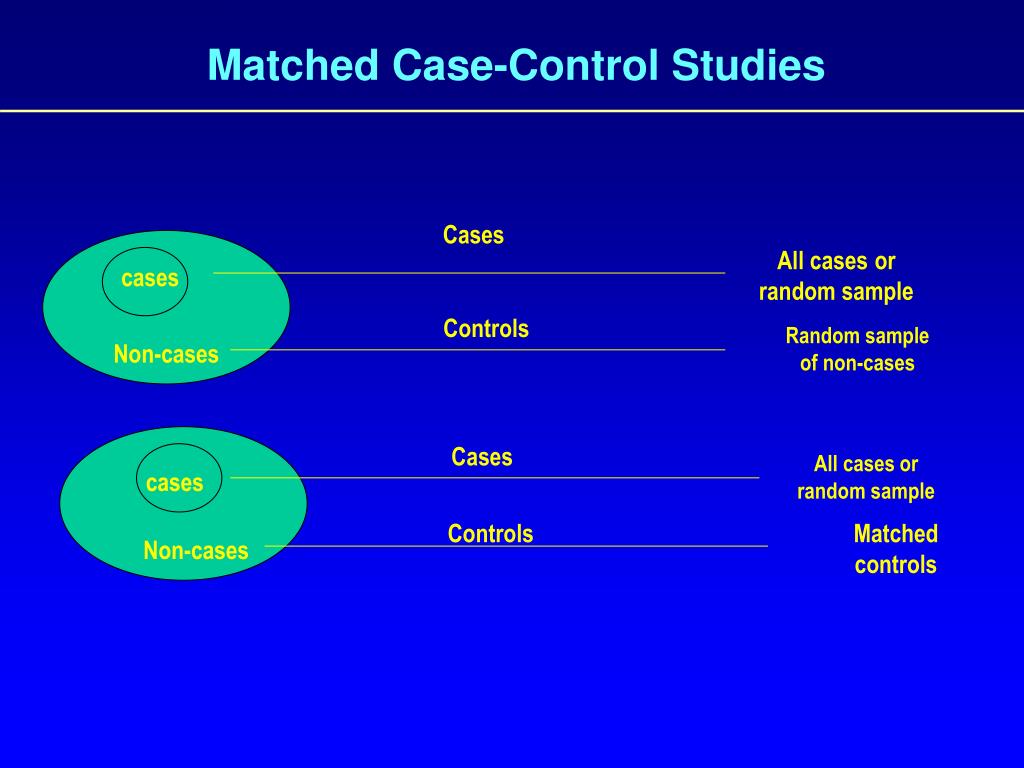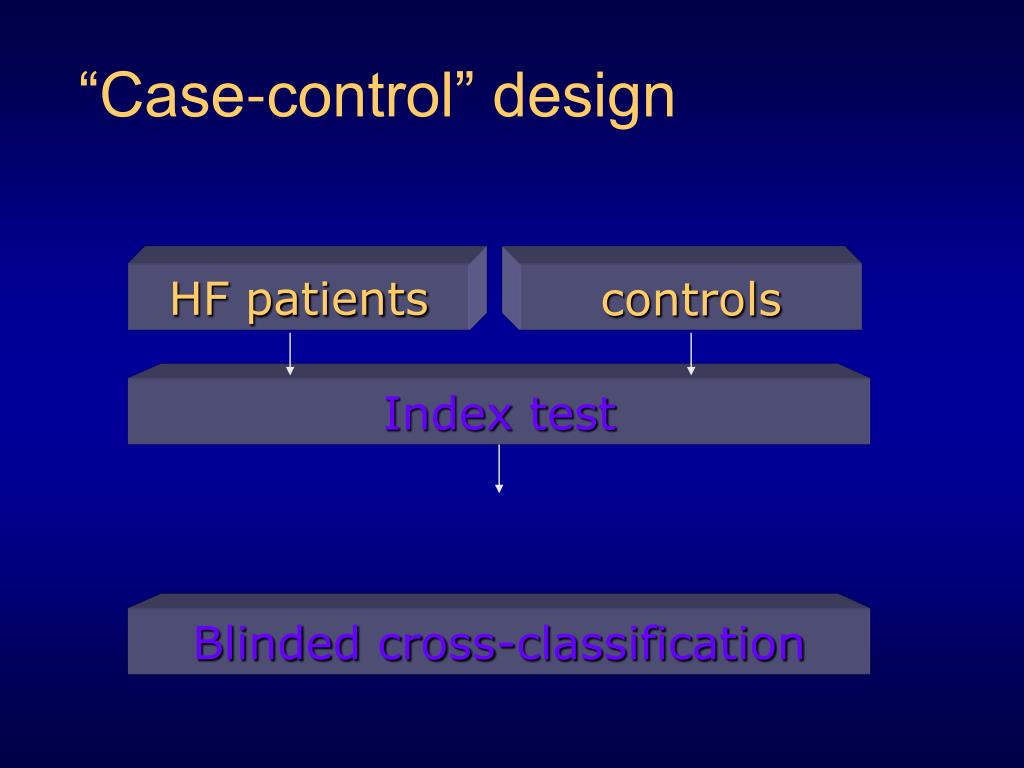
Potential confounders should usually be measured before entry into the cohort, to avoid adjustment for factors in the causal pathway. In a case–control study, the odds ratio is the usual measure of association reported. This measure is the ratio of the odds of an exposure between cases and controls and in most cases approximates the relative risk. As in a cohort study, the analytic plan for a case–control study typically involves advanced statistical methods to adjust for multiple potential confounders.
Frequently asked questions
Thus, some participants have the outcome of interest (referred to as cases), whereas others do not have the outcome of interest (referred to as controls). Thus, by design, in a case-control study the outcome has to occur in some of the participants that have been included in the study. Case-control studies, in contrast, require both a case group and a control group, as suggested by their name, and usually are used to identify risk factors for a disease by comparing cases and controls.
Study of Intended Drug Effects
Another use for case-control studies is investigating risk factors for a rare disease, such as uveal melanoma. Patients who present to hospital, however, may not be representative of the population who get melanoma. If, for example, women present less commonly at hospital, bias might occur in the selection of cases. (For identification of a conditional risk ratio, see Theorem 2 of Supplementary Appendix B.) Case-base sampling, also known as case-cohort sampling, means that no individual who is at risk at baseline of sustaining the event of interest is precluded from selection as a control.
When to use a case-control study

As observational studies, they can suggest associations between an exposure and a disease, but they cannot prove without a doubt that the exposure causes the disease. In particular, issues arising from timing, research biases like recall bias, and the selection of variables lead to low internal validity and the inability to determine causality. The strength of the association between an exposure and a disease in a case-control study can be measured using a few different statistical measures, such as odds ratios (ORs) and relative risk (RR). Is not identifiable from the available data distribution under the stated assumptions (see remark to Theorem 3, Supplementary Appendix B). However, approximate identifiability can be achieved by invoking the rare event assumption (or rare disease assumption), in which case the marginal odds ratio approximates the marginal risk ratio.
Additionally, cohort studies in general are more longitudinal in nature and do not necessarily require a control group. Standing out for its portability, the DaVinci Resolve Micro Color Panel is roughly the size of a keyboard. This panel packs a punch with high-quality trackballs and machined knobs for precise control over color correction. Whether you’re adjusting shadows, highlights, or saturation, the tactile feedback provided by these controls allows for nuanced fine-tuning. We specifically studied two causal contrasts (i.e., pairs of interventions), one corresponding to intention-to-treat effects and the other to always-versus-never per-protocol effects of a time-varying exposure.
Correction of vaccine effectiveness derived from test-negative case–control studies - BMC Medical Research ... - BMC Medical Research Methodology
Correction of vaccine effectiveness derived from test-negative case–control studies - BMC Medical Research ....
Posted: Sat, 10 Jun 2023 07:00:00 GMT [source]
Past Events
Selecting only hospital-based cases may lead to systematic error related to hospital admission practices, whereby exposed cases may be more likely to be admitted and therefore selected into the study (a phenomenon known as Berksonian bias). Furthermore, only new (incident) cases should be selected, as nonincident cases usually over-represent long-term survivors, and diagnostic practices may change over time, introducing potential bias. When cases are selected from a secondary data source, the case definitions should be supported by previous validation studies. The most commonly cited disadvantage in case-control studies is the potential for recall bias.
Impact on longevity and public health
This type of design is useful for rare outcomes and those with long latent periods. However, they may also be prone to certain biases – selection bias and recall bias. This paper gives a formal account of how and when causal effects can be identified in case-control studies and, as such, underpins the case-control application of Dickerman et al. [3]. Like Dickerman et al., we believe that case-control studies should generally be regarded as being nested within cohort studies.
Selection as a control, S, is further assumed independent of baseline covariate L0 and exposure A0. Selecting controls from survivors only (e.g., rows 4, 5, 7 and 9 in Fig. 1) violates this assumption when survival depends on L0 or A0. The utility of the case-control studies includes answering epidemiological questions for risk factor identification as well as providing data on therapeutic effectiveness. The strength of case-control studies is dependent on well thought out clinical questions and quality study design. When used appropriately, findings can make important contributions to the literature that address causation or determine or refine treatment algorithms.
Similarly, if all of the cases of Kaposi's sarcoma were found to come from a small community outside a battery factory with high levels of lead in the environment, then controls from across the country with minimal lead exposure would not provide an appropriate control group. The investigator must put a great deal of effort into creating a proper control group to bolster the strength of the case-control study as well as enhance their ability to find true and valid potential correlations between exposures and disease states. If, for example, our cases of Kaposi's sarcoma came from across the country but our controls were only chosen from a small community in northern latitudes where people rarely go outside or get sunburns, asking about sunburn may not be a valid exposure to investigate. Similarly, if all of the cases of Kaposi's sarcoma were found to come from a small community outside a battery factory with high levels of lead in the environment, then controls from across the country with minimal lead exposure would not provide an appropriate control group.
Risk factors for the development of triple-negative breast cancer versus non-triple-negative breast cancer: a case ... - Nature.com
Risk factors for the development of triple-negative breast cancer versus non-triple-negative breast cancer: a case ....
Posted: Sun, 20 Aug 2023 07:00:00 GMT [source]
In such circumstances, as in quasi-controlled studies,9 there is bound to be confounding. The other reason is that, in case-control studies, data areusually drawn from medical records or databases. Information extracted from such sources isvery unlikely to have been collected and recorded with the expectation of use in futureresearch. When the sample size is large, it becomes easier to see a signalthrough the noise. The main issues of concern with a case-control study are recall bias, its retrospective nature, the need for a careful collection of measured variables, and the selection of an appropriate control group.[3] These are discussed above in the disadvantages section.
Careful consideration of time intervals in the design of the conceptual target trial and of the actual cohort or case-control study is therefore warranted. Table 1 summarises a number of identification results for case-control studies without matching. Each result consists of one of the three aforementioned sampling schemes, an estimand, a set of assumptions, and an identification strategy. Under the conditions of the “Sampling scheme” and “Assumptions” columns, an identifying functional of the estimand of the “Estimand” column is obtained by following the steps of the “Identification strategy” column. An estimand is said to be identifiable if the distribution of the available data is compatible with exactly one value of the estimand, or therefore, if the estimand can be expressed as a functional of the available data distribution.
The authors present a nice overview of what case control studies truly are, highlighting some of their advantages and their limitations. Although the use of true case-control studies in neurosurgery has, to date, been somewhat limited, the methodology holds substantial potential for answering important questions in our field. In a longitudinal study, researchers monitor a population over an extended period of time, and they can be used to study developmental shifts and understand how certain things change as we age.
This view emphasises that the threats to the validity of cohort studies should also be considered in case-control studies. For example, in case-control applications with risk-set sampling, researchers often consider the covariate and exposure status only at, or just before, the time of the event (for cases) or the time of sampling (for controls). However, where a cohort study would require information on baseline levels or the complete treatment and covariate history of participants, one should suspect that this holds for the nested case-control study too.
Dock your latest iPad Pro in the Micro Control Panel, fire up the DaVinci Resolve app, and this tiny rig rivals most color-grading setups. Designed for professional as well as novice videographers and unveiled at NAB 2024 this year, the new portable control panel features a mounting slot for an Apple iPad Pro, an internal battery, supports both Bluetooth and USB-C connections, and boasts an affordable $495 price tag. This article is the sixth in the CJHP Research Primer Series, an initiative of the CJHP Editorial Board and the CSHP Research Committee. The planned 2-year series is intended to appeal to relatively inexperienced researchers, with the goal of building research capacity among practising pharmacists. The articles, presenting simple but rigorous guidance to encourage and support novice researchers, are being solicited from authors with appropriate expertise.

No comments:
Post a Comment